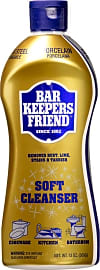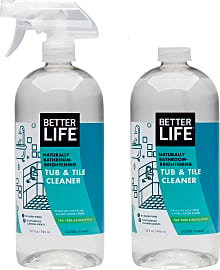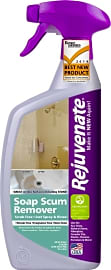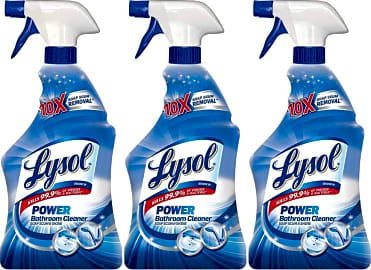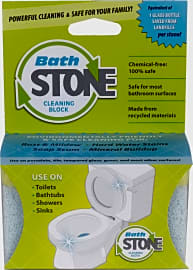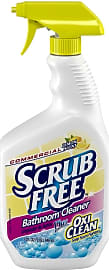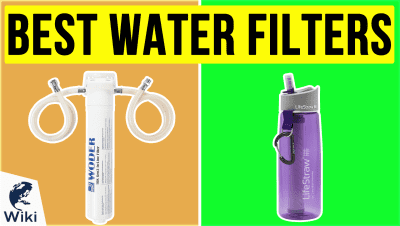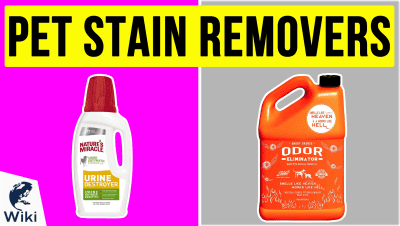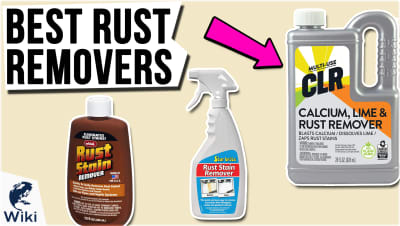The 10 Best Soap Scum Removers

This wiki has been updated 37 times since it was first published in June of 2016. Who would have thought that combining two of the most seemingly innocuous substances – plain old water and soap – could produce such an unsightly mess? If your home suffers from bathroom woes, try one of these scum removers. They are formulated to take all the hard work out of cleaning tubs, showers, and counters, and are even available in natural and eco-friendly removal options. When users buy our independently chosen editorial picks, we may earn commissions to help fund the Wiki.
Editor's Notes
October 22, 2020:
We removed The Bucko Shower Soap Scum and Grime and Krud Kutter Original due to availability concerns and replaced them with Scrub Free Bathroom and Lysol Power Cleaner. Both of these options have powerful, scrub-free formulas which quickly cut through soap scum, mildew, and mineral deposits. After you let it sit for a few minutes, all you have to do is wipe it away. Because of the strong ingredients, though, it’s best if you wear gloves while using these. We replaced Tilex Remover & Disinfectant with Better Life Tub and Tile to include another natural option. This brand uses safe ingredients that are reliably sourced, so it’s an ideal option if you have pets and kids running around.
April 27, 2019:
Since most folks don't really enjoy scrubbing the bathroom, we looked for soap scum removers that make the process painless, and without putting the hurt on your wallet. We still believe that Mr. Clean Magic Eraser Scrubber and Bring It On Cleaner live up to these criteria. You'll probably use up the Magic Erasers faster than the latter, but they are simple and effective, making them well worth it. We kept the EarthStone Bathstone, too, although there is a slight possibility that it can scratch surfaces – even though the company says it won't. For the best results, you may want to try it on a small and inconspicuous area before you begin scrubbing with gusto. Also, we added Method All-Purpose, which comes in scents that shouldn't aggravate sensitive noses. Plus, this product is all natural and works on more than just soap scum, which can save you some cash in the long run. And, finally, we removed Comet Bathroom and Scrub Free Plus, which just don't give enough bang for your buck.
What Is Soap Scum And Why Should It Be Removed?
If the shower curtains remained uncleaned, these organisms would have enough time to reproduce and become a much larger threat.
Soap scum is the term for the white solids which build up around shower doors, counter tops, clear glass dishes, or windows after treatment with tap water and soap. The concentration of hard minerals left behind is often called soap scum, silt, or limescale.
Soap scum is caused by minerals in hard tap water interacting with soap. As molecules of ionic calcium or magnesium come into contact with the fatty acids in soap, they lock on to the natural sodium ions in these fatty acids. The bond formed between the two creates insoluble compounds within the soap that prevent it from lathering; rendering the soap highly ineffective. From cleaning laundry or dishes to washing the body and hair, soap clings to other molecules rather than react with the water, leaving behind the familiar white crust.
Soap scum is an eyesore, and that alone is reason enough to remove it. Without a soap scum remover, however, it is a very difficult task. In addition to being laborious, soap scum may also pose some risks to your health. Recent research studied polyvinyl chloride shower curtains which came into contact with hard water and soap. Over time, these shower curtains tend to accumulate soap scum deposits, which show rich microbial biofilms under microscopy.
Researchers collected samples of shower curtains from different homes to identify the types of potentially harmful bacteria found in these biofilms. The study noted that each film was highly complex and that no two biofilms were composed of the same microbes. All samples included various opportunistic pathogens known to be harmful to humans. The researchers also detected many other kinds of organisms in lower abundances. If the shower curtains remained uncleaned, these organisms would have enough time to reproduce and become a much larger threat.
Why Use Soap Scum Removers?
Knowing that soap scum provides the ideal breeding ground for various pathogenic bacteria, the decision to use a soap scum remover is a smart one. Additionally, soap scum removers make the process extremely easy, as they create the ideal compounds to adhere to and remove soap scum.
Knowing that soap scum provides the ideal breeding ground for various pathogenic bacteria, the decision to use a soap scum remover is a smart one.
The chemistry of soap scum removers is the key to their success. Most contain either ionic or non-ionic surfactants combined with acids to react with the heavily basic composition of soap scum minerals. These two working together produce far greater results than scrubbing alone.
In actuality, many of the compounds in soap scum removers require little external effort. After spraying them on the soap scum, the acids begin to lessen the bond of the basic minerals through a neutralization reaction; while the surfactants help to bind with the soap scum. The result is sparkling clean glass, counter tops, and tiles with just the effort of wiping the soap scum remover away with a cloth.
Additional Effects Of Hard Minerals In Soap Scum
The effect of the hard minerals which create soap scum is not limited to spotty windows and biofilm. The majority of homes depend on a hard water supply, especially in large cities. The term hard water simply means water that has a high mineral content. Pure water has often been called the ultimate solvent. Water mixes with carbon dioxide as it comes up through the groundwater, forming small amounts of carbonic acid. Only about one percent of the carbon dioxide turns to carbonic acid. This carbonic acid lasts for just a fraction of a second before turning into protons and bicarbonate ions. Despite its short lifespan, carbonic acid is critical to the health of the atmosphere and the human body. It is an important part of the equilibrium between carbon dioxide, water, and many other minerals. In its short lifespan, carbonic acid can dissolve limestone, calcium, magnesium, and other minerals into the water.
It is an important part of the equilibrium between carbon dioxide, water, and many other minerals.
This process continues as long as the water is pulled up from the earth. The result is extremely high concentrations of minerals in certain areas of the world. This effect may be amplified if the water is used more than once or travels long distances to its destination. As this hard water enters the home, the minerals within it are in an ionic state and highly reactive. These reactive minerals stick to metal pipes, faucets, appliances, glass, and even combine with soap; creating a long list of problems.
If these minerals build up within pipes, the first thing noticed is fluctuations in water pressure. Some areas of the home may have little to no pressure, while the water pressure elsewhere is extremely high. If the pipes are not cleaned, they can become completely clogged and may even burst.
Many household appliances use tap water, such as dishwashers, coffee makers, and washing machines. Hard minerals may also cause a reduction in the lifespan of these appliances. Continuous mineral buildup can affect or completely arrest the moving parts of these machines. Additionally, machines that use soap will create additional soap scum, as these minerals cling to the soap and adhere it to clothing and glass. Many people turn to water filters to reduce the minerality of their water to manageable levels or eliminate it completely.




